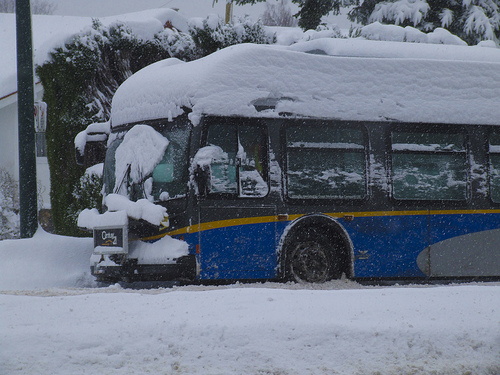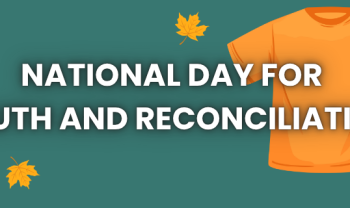It looks like Mother Nature is making up for the lack of snow during the holidays, as over the next few days and possibly weeks, the Lower Mainland will be hit with its first significant snowfall of the season. What does this mean? Well, for starters, it means that everyone should prepare a little more for their morning commute.
The first step is to stay tuned to our campus website for updates on campus status during periods of snowfall. If we need to close the campus due to dangerous driving conditions, a notice will be published on the College website as soon as possible. If you’re concerned about the weather, check in frequently.
If you’re taking public transit to our campus (or anywhere) be sure to follow some of these snowfall safety guidelines:
Leave yourself lots of time for your commute:
- Rushing can increase your chances of an accident, so leave yourself extra time to get where you need to go
- Traffic and people in general usually move slower in wintery weather, so leaving extra time will not only make your journey safer, it’ll increase the chances of you arriving at your destination on time, or slightly early
Dress appropriately:
- This might sound like common sense, but I still see people struggling through the snowy streets not wearing the necessary clothing
- It all starts with your shoes, sure snow may be wet and uncomfortable, but the real culprit is ice, you want to be sure that whatever shoes you have on are capable of good grip and easy to walk in and maintain balance
- Gloves can be really essential: you might need your hands for balance, so you don’t want them going numb. Wear gloves to keep your hands warm so they can be helpful if you need them
In heavy snow, avoid long trips if possible:
- When it’s snowing heavily, the best advice is just to stay in. Many vehicles can lose control on the road, so crossing the street becomes very dangerous, so if you can avoid dealing with the elements, that’s your best bet.
If you’re driving in the snow, here are some best practice tips:
Drive slowly:
- This is basic but absolutely necessary. Speed control is definitely first and foremost the best way to prevent any accidents when driving in the snow.
- Try and brake slowly. Most people get used to braking heavily to slow down, in the snow, that will only cause problems. Plan your braking in advance, to do this, leave space between you and the vehicle in front of you
Snow Tires:
- The proper tires will make a world of difference. Ensure that your vehicle is equipped with snow tires, this can help with traction and stability. Especially when turning.
Warm up your vehicle:
- To prevent your vehicle from breaking or wearing down, be sure to allow it plenty of time to warm up.
Plan your route:
- One of the best things you can do is plan your route without hills. Try and map out the easiest and safest route to your destination.
- This may take a bit of time to plan, and add time to your commute, but it will pay off in the end.
- Ice is more dangerous than snow. When driving, snow will cause you to be stuck, and it may take time to be able to move your vehicle again, whereas ice will cause your tires to lose traction and can cause them to swerve in any direction. When driving on ice, it is extremely important to control your speed.
Hopefully, these winter weather tips help you on your commutes throughout the snow and ice. Stay tuned to our campus website for updates on campus status during periods of snowfall.
Written by:
Darren Prasad
Web Marketing Coordinator





